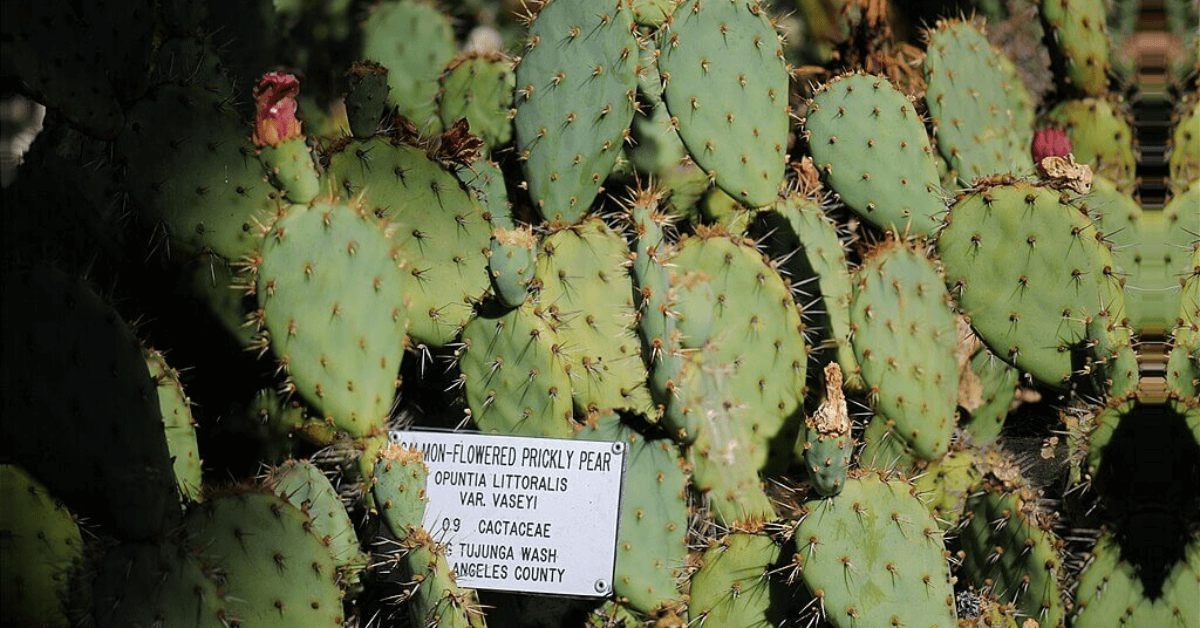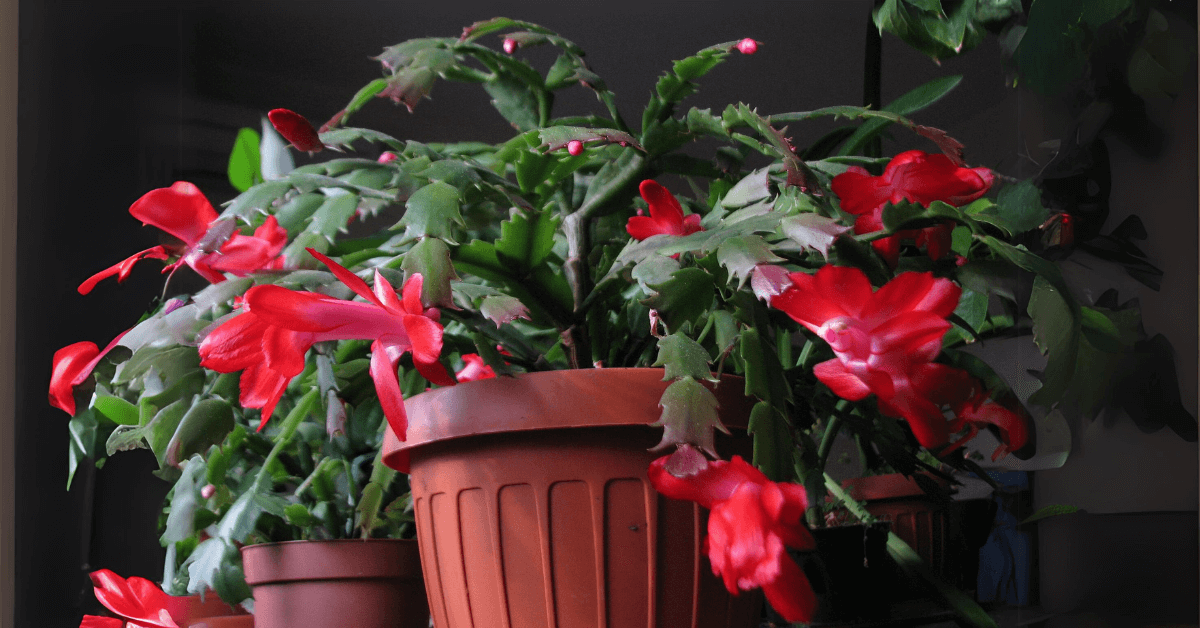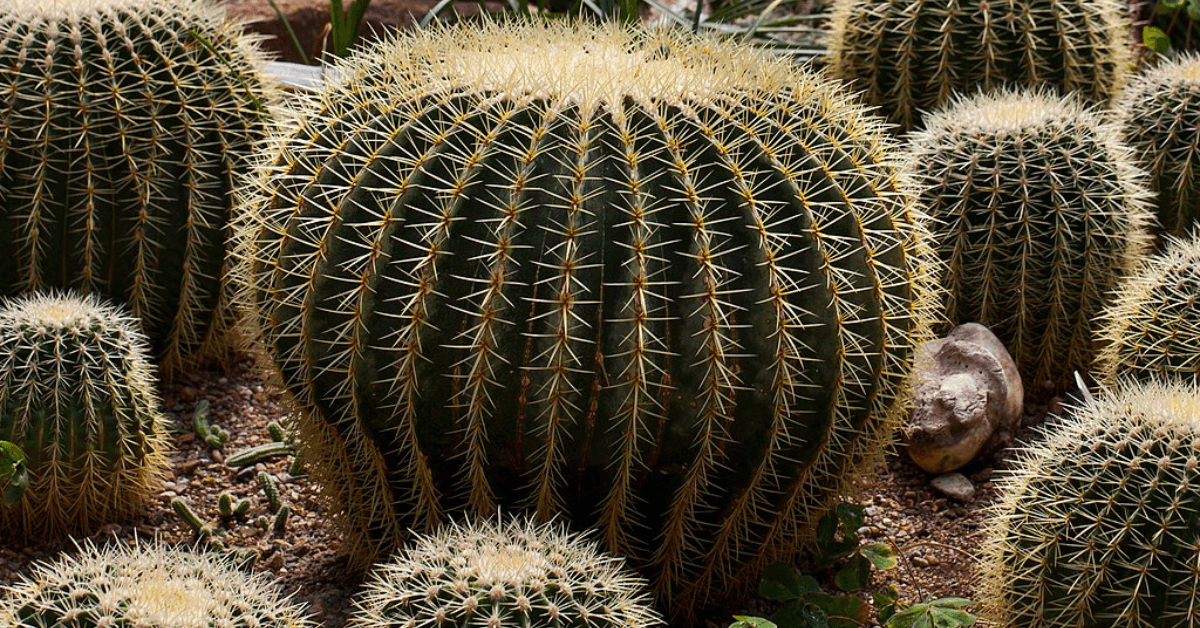| Botanical Name | Ferocactus latispinus |
| Family | Cactaceae |
| Plant Type | Cactus |
| Mature Size | 12-24 inches tall, 18-24 inches wide |
| Sun Exposure | Full sun to partial shade |
| Soil Type | Well-drained, sandy or rocky soil |
| Soil pH | Neutral to slightly acidic (6.0-7.0) |
| Bloom Time | Fall to winter |
| Flower Color | Yellow, red, or purple |
| Hardiness Zones | 9-11 (USDA) |
| Native Area | Mexico |
Ferocactus latispinus, commonly known as the Devil’s Tongue Barrel Cactus, is a striking species of desert plant from the Ferocactus genus, native to the arid and semi-arid regions of Mexico.
This hardy cactus can grow up to 3 feet tall and 2 feet wide when fully mature, showcasing thick, sharp spines that cover its ribbed body.
During the fall and winter months, it rewards patient growers with vibrant red, yellow, or purple flowers, creating a bold contrast against its tough, spiky exterior.
Many people struggle with getting it just right, especially when it comes to watering and sunlight. This article breaks it all down in simple steps, helping you master its care and even coax those beautiful yellow or red blooms in fall and winter.
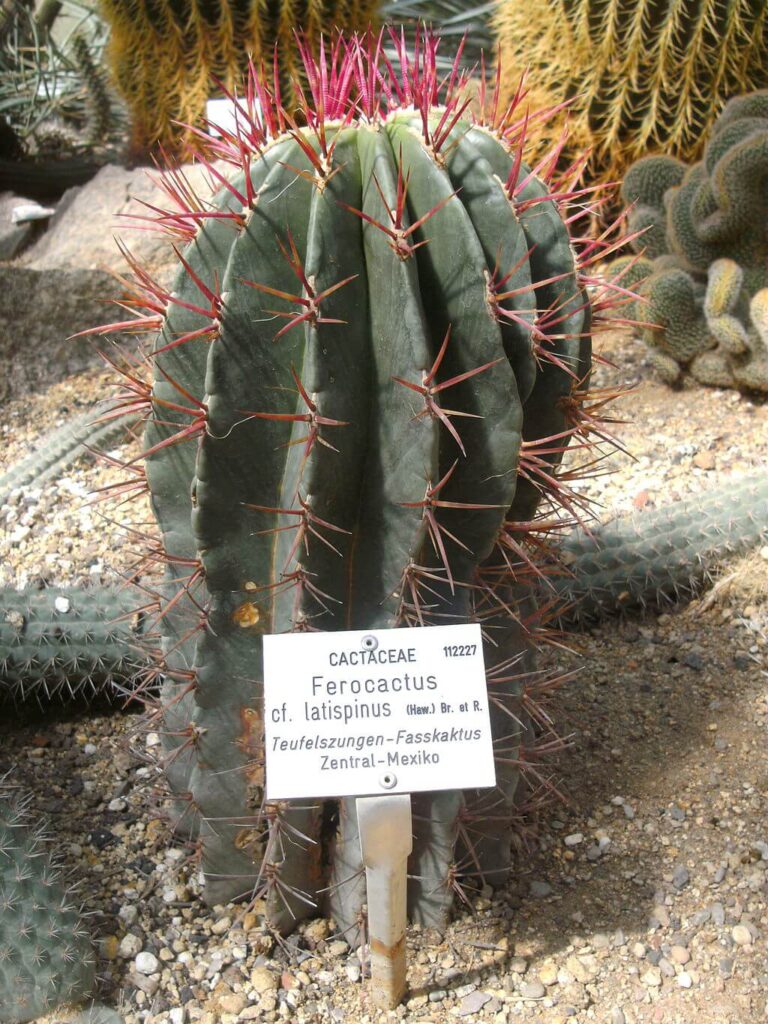
How To Grow Devil’s Tongue Barrel Cactus
Here are some methods for growing Devil’s Tongue Barrel Cactus in the below table.
| Method | Recommended | Difficulty | Comments |
|---|---|---|---|
| Stem Cutting | ✘ | Hard | Difficult and risky due to the cactus’s structure and slow growth. |
| Leaf Cutting | Not Applicable | Not Applicable | As a cactus, barrel cacti do not have traditional leaves suitable for propagation. |
| Seed | ✔ | Moderate | Seeds germinate slowly, and young cacti need care. |
| Bulb | Not Applicable | Not Applicable | This cactus doesn’t grow from bulbs, so this method is not applicable. |
| Division | ✘ | Hard | Not applicable for this cactus type as it does not naturally form clumps that can be divided. |
| Layering | Not Applicable | Not Applicable | Not commonly used for cacti. Generally more complex and less effective compared to cuttings. |
What You’ll Need
- Shallow tray or small pots with drainage holes
- Cactus or succulent potting mix
- Seeds or a plant from nursery
- Plastic wrap or a humidity dome
Growing Devil’s Tongue Barrel Cactus(Step-by-Step)
1. Prepare the Soil:
You can either buy or prepare soil by mixing 2 parts potting soil, 1 part perlite, 1 part sand (coarse sand is preferable), and 1 part pumice or grit(optional). Or buy cactus and succulent mix. Make sure the soil is slightly moistened but not soggy.
2. Planting:
- Plant the cactus:
- Fill the pot halfway with the soil mix. Carefully place your cactus in the pot, avoiding touching the sharp spines.
- Fill in the rest of the pot with soil, covering the roots, but don’t bury the cactus too deep.
- Gently press the soil down around the base.
- Sow the seeds:
- Fill your shallow tray or small pots with prepared soil.
- Scatter the seeds evenly over the soil surface. Since the seeds are small, there’s no need to bury them deep.
- Lightly press them into the soil to ensure they have good contact, but keep them near the surface.
- Cover the tray or pots with plastic wrap or use a humidity dome.
- Seeds can take anywhere from a few weeks to a couple of months to germinate.
- Once the seedlings are large enough to handle, you can transplant them into individual pots with cactus potting mix.
How to care for Devil’s Tongue Barrel Cactus?
The Devil’s Tongue Barrel Cactus care includes watering, fertilizers, repotting and sunlight and temperature. From which the watering is the most crucial part.
Sunlight:
- Need 6 hr of direct bright sunlight each day. Inside, keep it in a south-facing window.
- If you notice brown or white patches on the skin, it may be getting too much direct sunlight.
- Move it to a slightly shadier spot, especially during the hottest part of the day.
Watering:
The Devil’s Tongue Barrel Cactus doesn’t need much water and actually prefers being dry rather than overly moist. To check if your cactus needs water, stick your finger into the soil. If it’s dry all the way down, it’s time to water.
- In spring and summer: Once every 2-3 weeks.
- In winter: Once a month or even less is often enough.
- Overwatering: If your cactus starts to look a little soft or discolored, it may be getting too much water. Cut back on watering and make sure the soil is draining properly.
For more details on sunlight, temperature, fertilizers, and repotting kindly refer to this table of care of Golden Barrel Cactus. It has the same care requirements.
Pest:
Occasionally, mealybugs or spider mites might decide to move in. You can get rid of them by wiping the cactus with a cotton swab dipped in rubbing alcohol, or use an insecticidal soap made for houseplants.
Tips for Happy Growing:
- Avoid too much handling: Too much handling can damage the plant and sharp spines can hurt you.
- Give it space: It needs space to grow, to spread out. Make sure it has enough space according to size.
- Check the roots: During repotting, if you notice any brown or black root, it may indicate root rot. These parts should be trimmed away before replanting.
Conclusion
The Devil’s Tongue Barrel Cactus is a striking, low-maintenance plant that can thrive with just a bit of care and attention. With the right light, minimal watering, and a little love, you’ll have a happy, healthy cactus that’s sure to become a showstopper in your garden or home. Just remember, patience is key, and over time, this cactus will reward you with its rugged beauty and possibly even a few colorful flowers.
Frequently Asked Questions
You Might Also Like ✾

The Cultural World Of Cacti: Art, History, And Uses
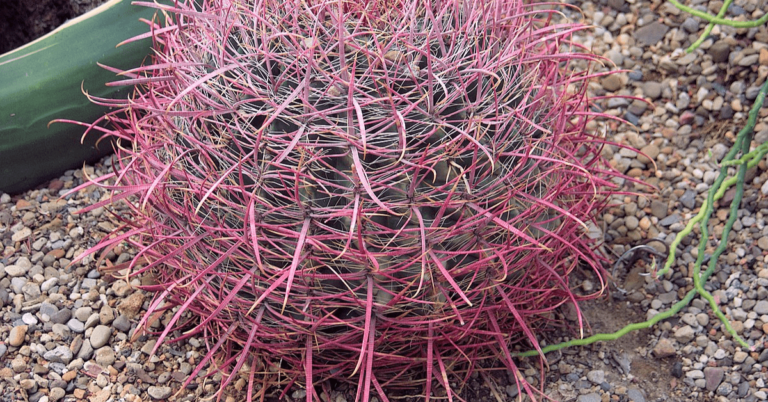
How to Grow and Care for Red Barrel Cactus
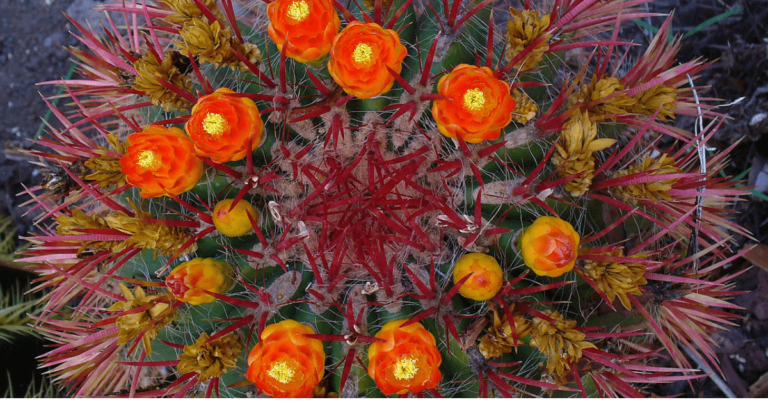
How to Grow & Care for Fire Barrel Cactus
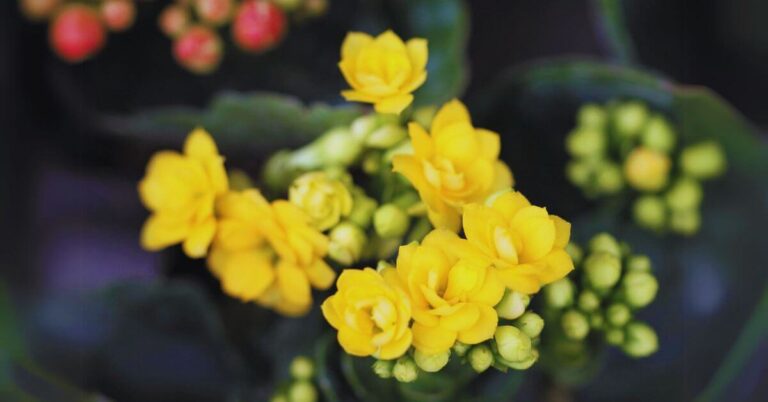
The Kalanchoe Succulent with Yellow Flowers
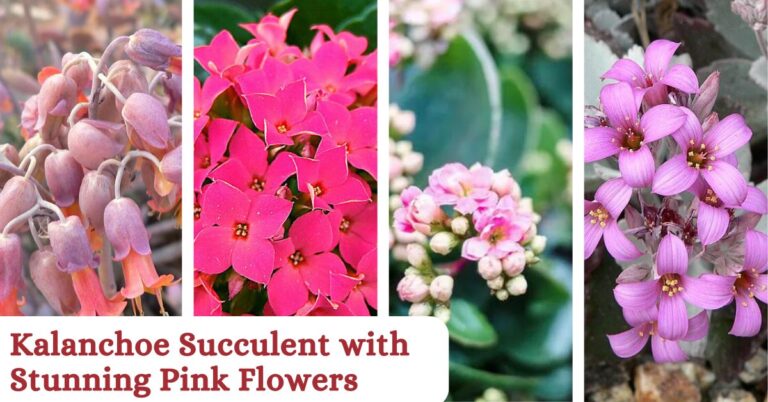
The Kalanchoe Succulent with Stunning Pink Flowers

How to Propagate Zebra Succulent from Leaves

